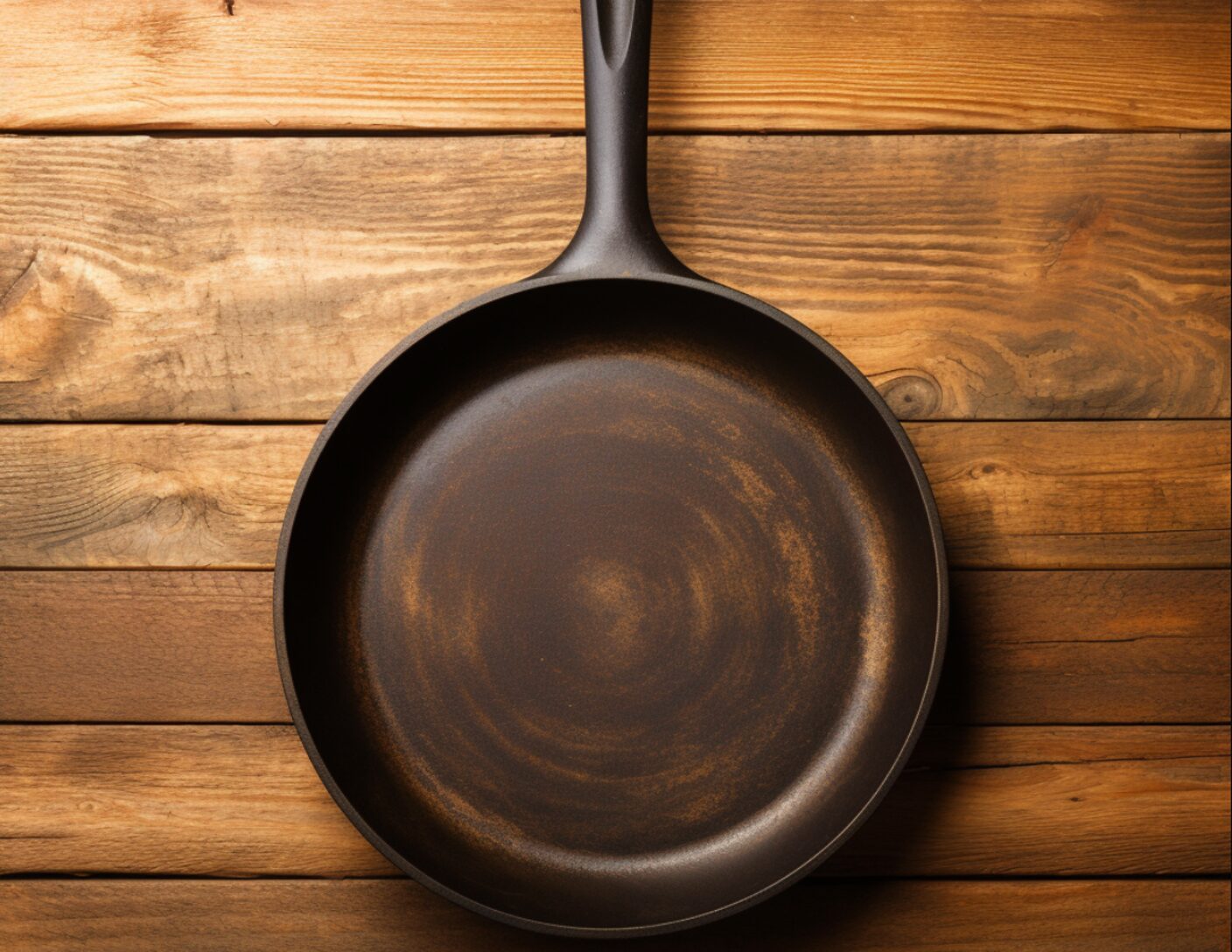When imagining daily life of Lewis & Clark’s voyages westward with Left Coast destinations, images of wagon caravans, cowboy hats, and Colt pistols are first to mind. And with a bit more imagination, we can expand peripherals upon neo-pilgrim cookware. With campfire imagery and smokey ideations of salted steak and eggs, the cast iron skillet is a primary visualization. This simple, yet elegant instrument of cooking might have indeed marked a stopping point in engineering whereby modern technology could not improve without trading health, as contemporary non-stick and aesthetically pleasing meals became the centerpiece of magazine modern living expectations.
Kitchens of modern caves have traded heavy iron skillets for sleek and light cookware touting the modern amenity of non-stick teflon coatings. Delivering as advertised: animal fats or butter as non-stick medium no longer necessary, clean meal presentation, and ease of washing. What could be better?
Innovation often precedes consequence; the cons being identified far after as side effects surreptitiously manifest in populations. I.E. leaded gasoline, asbestos ceilings (fire retardant), and Glyphosate (weed killer): Teflon cookware potentially could be added to this deadly pantheon. Most are unaware of the quiet directions that all Teflon coated pans comes equipped with: Avoid heating too high as this can produce toxic fumes causing polymer fume fever. Using the dishwasher to clean or abrasive utensils this can shred teflon particulate adding noxious seasoning garnish to meals. Age is also a factor as time degrades the integrity of coating. How old is your Teflon cooking arsenal?
Why take the risk by heating food in such a fickle and potentially risk laden chemical?
At Left Coast Caveman, we seek the middle ground between ancient practices and the contemporary now. And when it comes to cooking your meals, the technology of cast iron simply cannot be improved upon. Outside of the benefit one gets by working the wrist while using or cleaning this behemoth, this generational investment provides consistent and balanced heating while bestowing a trademark seasoned flavor from use. With proper conditioning it can also be rendered relatively non-stick as well. Cast Iron is not only affordable, durable (campfire approved), it also adds iron content to your food. Although, this aged prairie companion doesn’t come without a modicum of instruction also.
Cast Iron Conditioning – Non Stick Protocol
- Clean unboxed new pan with mild soap.
- Dry and clean: then apply a thin layer of high smoke point oil to all surfaces of the pan
- Wipe off excess oil and heat pan upside down in preheated oven to 350-450F.
- Bake pan for 1-2 hours (polymerizes the oil, creating a non stick surface).
- Repeat process to increase non-stick capabilities.
Cast Iron Cleaning
- Soap should not grace the cooking surface; instead water and chain mail / brush scrubbing post meal. Finish by toweling and air dry to preserving non stick / flavor profile: (heritage).















